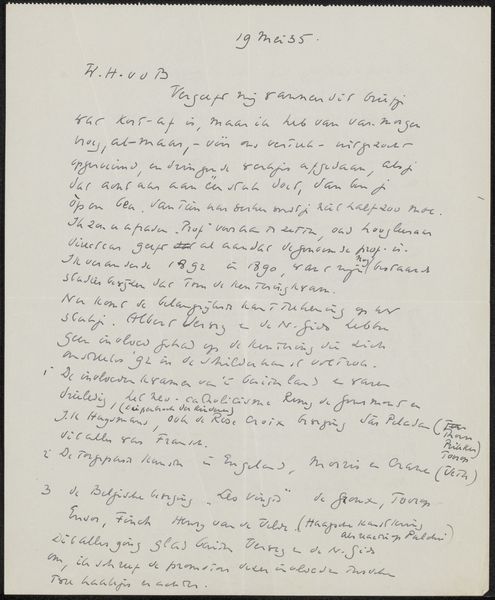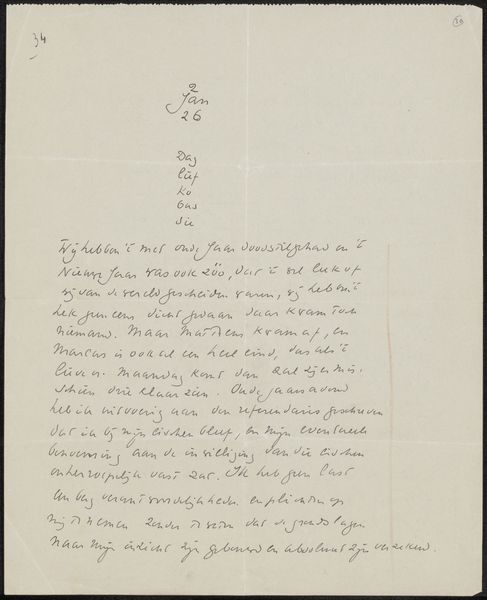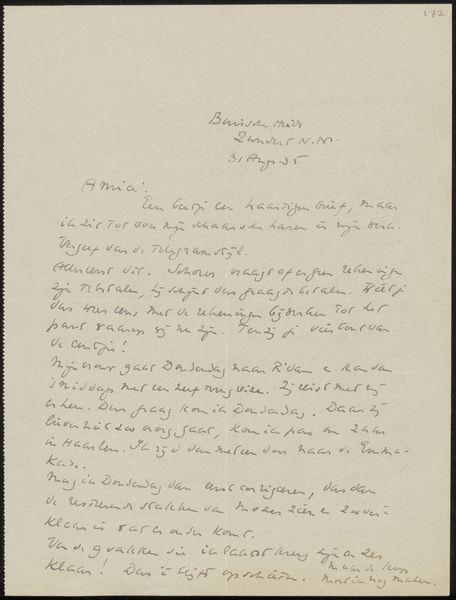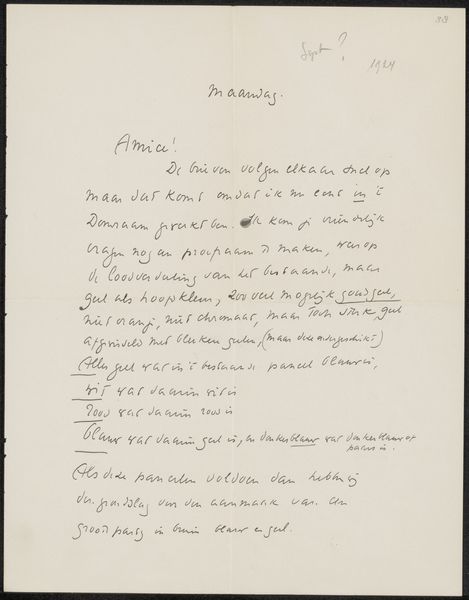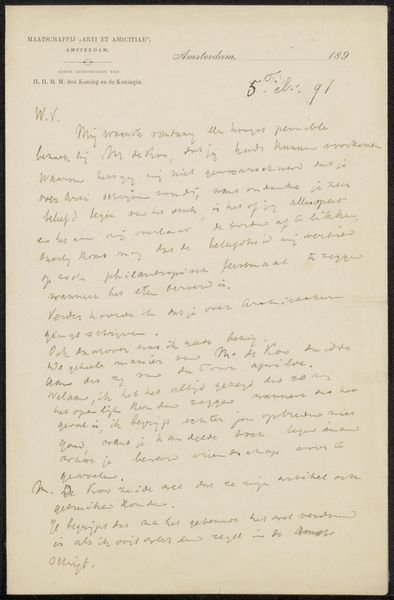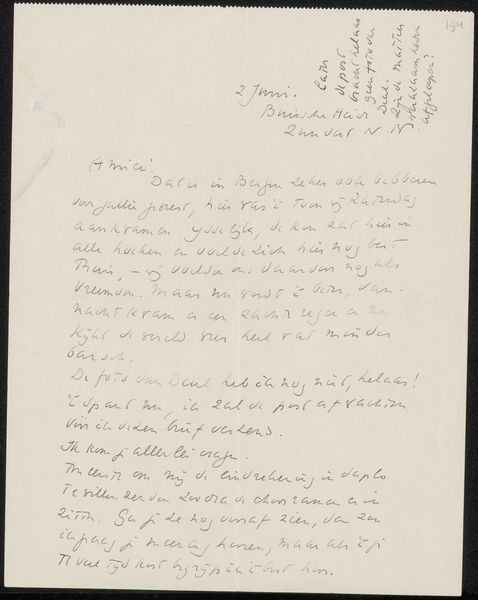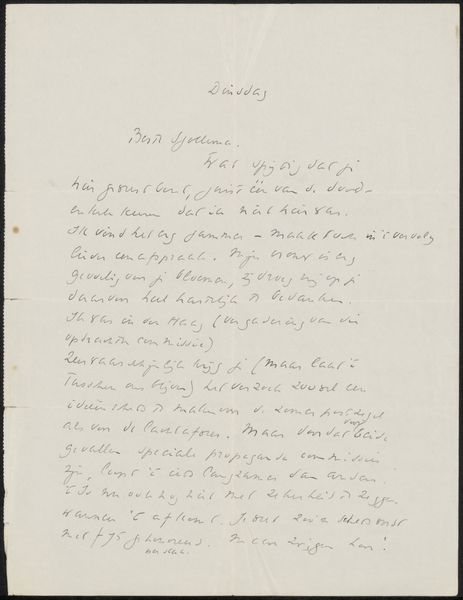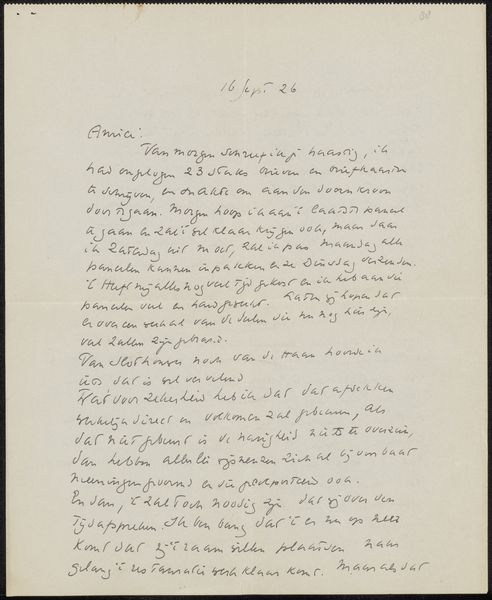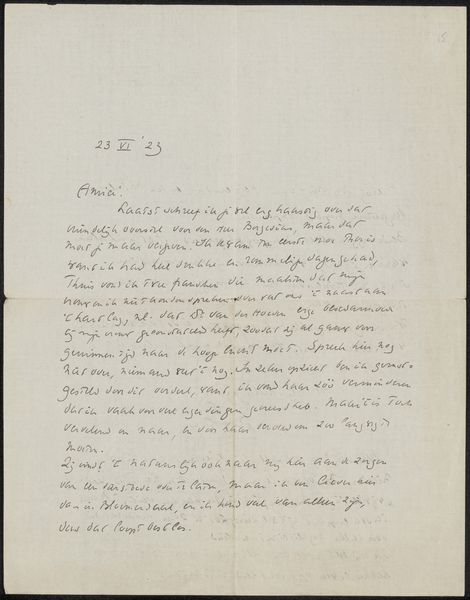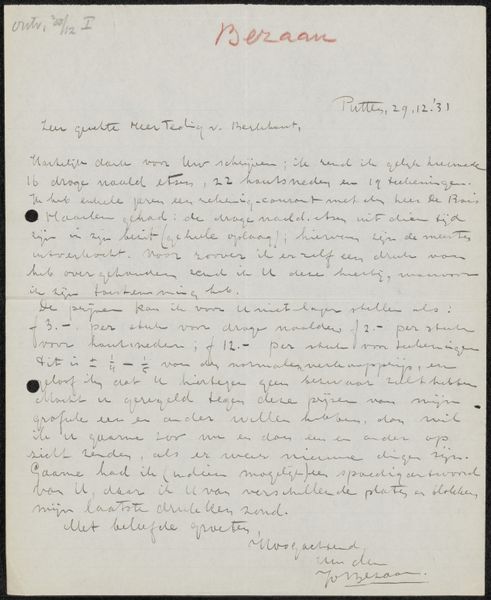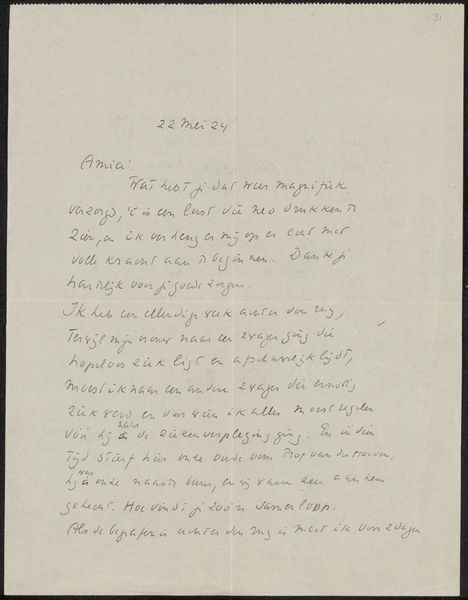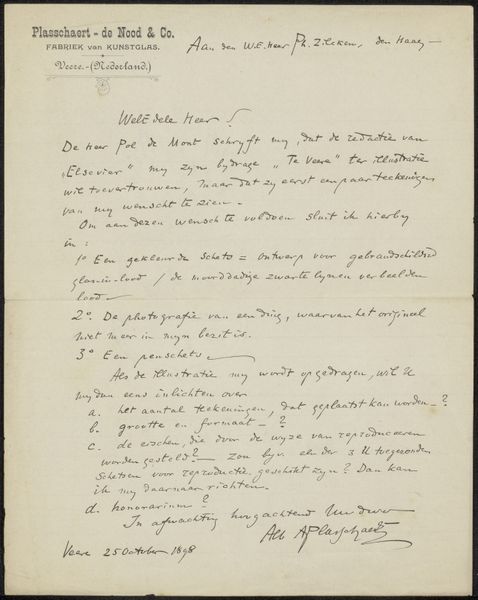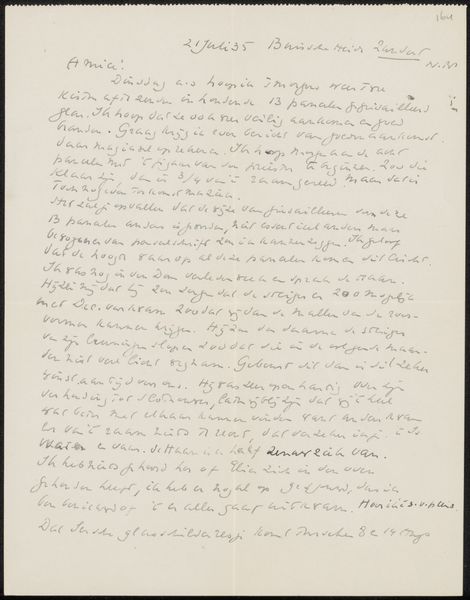
drawing, paper, ink, pen
#
drawing
#
paper
#
ink
#
pen
#
calligraphy
Copyright: Rijks Museum: Open Domain
Curator: Looking at this drawing, "Brief aan A. van der Boom" by Richard Roland Holst, created around 1923 using pen, ink, and paper, the first thing I notice is the artist's choice to present an everyday means of communication as art. Editor: Yes, I was intrigued that something as mundane as a letter could be considered a work of art in a museum. What’s striking to you about the materiality of it? Curator: I find it compelling to consider the social context embedded in the materials themselves. The relative accessibility of pen, ink, and paper allowed for wider participation in artistic production. How might Roland Holst's choices of material affect traditional concepts of artistic creation and consumption? Editor: So, by using these materials, he’s kind of blurring the lines between fine art and the everyday? Curator: Precisely. We also have to think about Holst's artistic labour. How long did it take to write the letter and why? Editor: That's something I hadn’t considered. Thinking about the social conditions of artistic creation really opens up the work to new perspectives. I see it less as simply a letter now and more as an artifact. Curator: Exactly, by examining these components, we gain insight into the social conditions surrounding the production of art and the interplay between intention and outcome. Editor: I hadn't thought about the social elements inherent in the work until now. Curator: By viewing art through the lens of materials and labour, we unveil new ways to engage with and understand artwork.
Comments
No comments
Be the first to comment and join the conversation on the ultimate creative platform.
